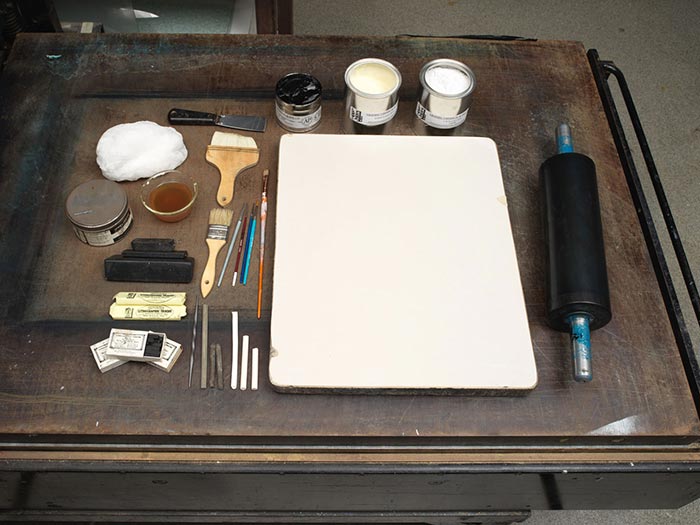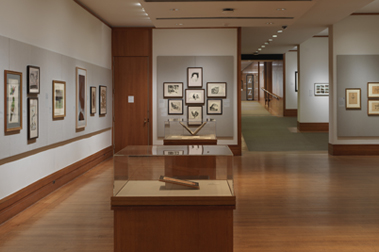A Swell Sport on a Buffalo Hunt: Aw -- I say! Don't see any Buffalo!
Thomas B. Worth American
Publisher Currier & Ives American
Not on view
In this comic American West scene, a very tall, thin, well-dressed gentleman sits primly on a small brown horse and stretches his long legs forward. The man, who has long droopy whiskers, is dressed in a blue derby hat, a blue-checked jacket, a red shirt; he has a large knife tucked beneath his belt, and his rifle hangs on his back. As horse and rider stop at the edge of the bluff, the man gazes through his monocle at the distant view (left). He is unaware of what is approaching from the other direction. Behind him, a bison (i.e. buffalo) charges downhill towards him, followed by a herd of stampeding bison (upper right background). In the lower right background, two horseback riders are indicated. The print's title is imprinted in the bottom margin with a caption referring to the man's being a British hunter who lacks the "Wild West" experience of being ever vigilant in all directions. A companion print, "A Swell Sport Stampeded: By Jove -- I say! Was that an Earthquake?" (Peters 515, Gale 6403; Metropolitan Museum of Art accession no. 52.632.245), depicts the misfortune caused by the bison's surprise encounter with the British hunter and his horse.
Nathaniel Currier, whose successful New York-based lithography firm began in 1835, produced thousands of prints in various sizes that together create a vivid panorama of mid-to-late nineteenth century American life and its history. People eagerly acquired such lithographs featuring picturesque scenery, rural and city views, ships, railroads, portraits, hunting and fishing scenes, domestic life and numerous other subjects, as an inexpensive way to decorate their homes or business establishments. As the firm expanded, Nathaniel included his younger brother Charles in the business. In 1857, James Merritt Ives (the firm's accountant since 1852 and Charles's brother-in-law) was made a business partner; subsequently renamed Currier & Ives, the firm continued until 1907. The artist of this print is Thomas Worth, a prolific nineteenth-century illustrator who excelled at drawing horses and other subjects, many of which were made into lithographs published by Currier & Ives.

